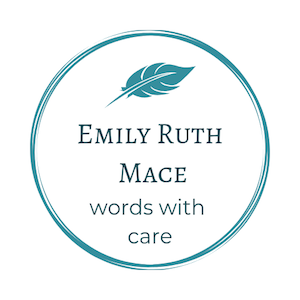Many years ago at a graduate school party, I was crowned the “Queen of the Pie.” At the early-December gathering, guests had been invited to bring their savory or sweet pie of choice. Three guests—friends of the host, no doubt—served as judges, and took small slices of each pie (there must have been at least 25 pies!) into a separate room. The rest of us dined on grasshopper pie, pie with the “pi” symbol on top, savory pie, quiche, chocolate pie, and many other types of pie I’ve long since forgotten.
At the end of the night, after the judges had finished their work, they emerged from their secret den to share the results. There were the humorous results (“pie that tastes most like toothpaste” is the one I remember best, being for a personal favorite of mine, grasshopper pie) and the serious: best savory, and best sweet.
Last of all, the judges award the coveted prize: the Pie Queen or King, the person whose pie, savory or sweet, championed them all. My name and pie had not yet been called or teased, and I held my breath.
“And the Pie Queen title goes to… Emily’s Pecan Pie!” the judges called out. They presented me with a foil crown, and insisted that I parade around the room giving an “elbow, elbow, wrist, wrist”-style queenly wave.
Ever since then, pie has been my specialty… but that doesn’t mean it comes easily. Kind of like writing.
It begins with an idea, and sometimes, that idea feels organized, clear. You have your materials ready, your outline of what to do when, what goes where, how it’s all going to hang together. The rolling pin is ready, the pie pan is ready, and the batter, helpfully mixed by your six-year-old daughter, is sitting somewhere unpictured.

For a while, everything’s going great! The pie crust seems like it’s holding together, which is a miracle. Usually my pie crusts resemble earthquake-shaken ground. I come back and patch it up with cold water, swearing and asking everyone to leave the room so I can try to make something that resembles a well-constructed crust.
It’s gotten easier, and the new Joy of Cooking‘s instructions help (cut in half the fat until it resembles breadcrumbs, then cut in the second half of the fat until it resembles peas. This seems to help it all stick together in the end, and results in fewer earthquake-ridden crusts).

It’s a little bit strange, what happens next. What had seemed to be flowing so well starts to fall apart. It’s messy. There’s “stuff” everywhere. The sink has too many dishes. The pie crust isn’t holding together when I lay it on the mat, and I know that once I’m rolling, the pin will push the floury bits to the outside, expanding cracks, revealing holes.
Being the Pie Queen doesn’t mean immediate perfection, it means practice, and no small amount of patience.

I find myself moving the outsides to the insides, patching up holes, solidifying the unstable places, wondering how it’ll all turn out in the end. This messy draft of a pie hasn’t turned out nearly as straightforward as I imagined. It needs editing, it needs a beta reader, it needs a friend to tell me to calm down, that everything will be taste great and no one will know about the tears and the sweat that went into the pie-making process.
Most likely, when I lift the crust to lay it on the pie pan or over the fillings, what I thought was, by then, carefully constructed, falls apart entirely, revealing new weak points and places to fix. I patch and edit again, smoothing a bit of crust and some cool water over the broken places, hoping my audience will receive so much nourishment of spirit from this pie that they’ll forgive the rough edges.

(Sometimes, there’s too much filling, and I find myself with little side projects to go along with what I thought I was writing all along. I fill little ramekins with the extra pumpkin pie filling, short stories in cinnamon, nutmeg, and ginger.)

Eventually the pies come out of the oven. They look good enough—I hope. This isn’t the Great British Baking Show, and my audience is generally too excited about pumpkin, pecan, or apple pie to care too much about specifics like leaking filling, thank goodness.
My pie “clientele,” like the readers of a writer’s words, don’t know about the swearing when the rolled-out crust breaks, the frustration, the reshaping, the mess on the counter, the dishes in the sink, the number of times I scrape down the rolling mat before putting it away. The final product always seems to please, enough for them to crave more next year.
Being the Pie Queen isn’t just about a pretty finished product, it’s about practice, luck, serendipity, no small amount of mess, and a tolerance for frustration. Kind of like writing, and getting your writing to the finish line.

I still won’t know how my latest pies turned out until dessert time at Thanksgiving tomorrow, when the reviews and the social media notifications come out, and if I’m lucky, the seconds, the little extra slivers. Maybe someone will come by late at night, no longer hungry but still craving more, and, with a sneaky fork, straighten the crooked edges left by the pie server, craving just one more bite, one more read.
Happy Thanksgiving to you, if you celebrate. I hope the food of your words and of your oven keeps the spirits of friends and family nourished in this holiday season.





Your pies and writing, both worthwhile tasting!